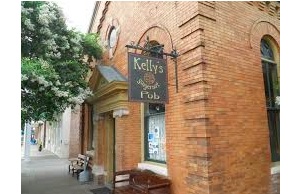WAYNE CREED: Give Blue Crabs a Chance to Rebuild
 By WAYNE CREED
By WAYNE CREED
August 4, 2014
Last year’s winter dredge of the Chesapeake Bay alarmingly indicated that the number of harvestable blue crabs has fallen to levels (lowest in 25 years) we haven’t seen since before current restrictions went into effect more than five years ago. With prices for big jimmys over $200 a bushel at the dock (try close to $300 retail), we don’t need the dredge to tell us something’s wrong. The abundance of spawning-age females was 69 million, declining just below the minimum safe level of 70 million. The pressures of overexploitation and declining habitat has certainly been a factor, but the drastic decline is still baffling. The last winter around the Mid-Atlantic may also have had an adverse effect; however Virginia Institute of Marine Sciences disease ecologist Jeff Shields feels there is another cause.
A National Science Foundation grant provided funding to research the missing blue crab, and Mr. Shields has discovered that the existence of a single-celled parasite called Hematodinium may be a major factor in the blue crab’s decline. Hematodinium was first reported along the East Coast in the 1970s and found in the Chesapeake’s blue crabs in the 1990s. The infection is almost always fatal.
According to the NSF report, Hematodinium infects young crabs, which usually die before they can make their way out of spawning grounds to local tributaries. There are several factors that may lead to epidemics like Hematodinium, such as stressful environmental conditions caused by loss of habitat (diminishing grasses), pollution, and overfishing.
According to what Mr. Shields told the Washington Post, “We hope to develop best practices for managing, in particular, the Chesapeake’s wild blue crabs. There’s a perception among resource managers and fishers that diseases aren’t important to the fishing industry, or that little can be done to manage them.”
Virginia Marine Resources Commissioner John Bull also noted, “This is disappointing news. We are now in a position to focus on the depleted adult females and move forward to increase protection of the next generation.”
CONTINUED FROM FIRST PAGE
The 2014 Chesapeake Bay Blue Crab report suggests that future catches and the ability for the blue crab stock to reach abundance targets could depend heavily on the survival and successful reproduction of the 2014 exploitable female stock. Protection is expected to increase the number of spawning age crabs in 2015, thereby lowering the probability of continued poor recruitment.
The good news is that there are still crabs around — they have a relatively short life cycle and reproduce quickly if left alone. After the female blue crab matures and mates, the newly molted sook must build muscle mass to ready herself for the migration to high-salinity spawning grounds where she will then release eggs (sooks let go of eggs 2-9 months after mating, usually May-August the next season). The average crab has about two million eggs, but may contain up to 8 million eggs, depending on her size.
The question is whether management efforts are doing enough to account for environmental variability (such as Hematodinium) from season to season. We’ve been here before: with the collapse of rockfish and yellow perch, it was only through a complete moratorium that these species were allowed to recover. Now it’s time to do something similar for our blue crab — to leave them be, and give them a chance to truly rebuild. So far, Virginia has asked for a 10 percent reduction in the harvesting of females, and Maryland may soon follow suit.
Another critical issue is working to improve harvest monitoring and accountability using market-based tools as well as smartphones, tablets, and personal computers for daily harvesting reports. This will hopefully produce more timely, accurate, and verifiable harvest data, and will enable fishery managers to implement more strategic management plans.
Yes, I understand these measures may deal a harsh blow to an already struggling waterman culture, but without them, the fishery may finally collapse for good. The industry’s first priority should be the long-term viability of the stock. In the interim, Virginia and Maryland should provide financial aid to commercial crabbers who may be asked to restrict their livelihood for two to three years while the stock recovers.
Reducing the stress from overfishing is only part of the answer. A recent report from the Environmental Integrity Project indicates that the lower Delmarva Peninsula is saturated with phosphorus and nitrogen, and that best management practices used to reduce runoff from chemical fertilizer, manure, and erosion are not working as well as thought. All this phosphorus and nitrogen causes massive algae blooms — sediment clouds the water, keeping sunlight from reaching underwater grasses, and silts over the hard water bottom essential for juvenile crabs to escape predators (such as rockfish).
The agricultural community on the Eastern Shore has been working very hard to reduce farm runoff, yet it is clear from this report that more needs to be done if the mandated “pollution diet” is going to meet its goal of restoring the health of the Bay, and will ultimately provide a sustainable habitat for the blue crab.
The Bay ecosystem is a complex, diverse habitat of plants and over 350 species of fish and shellfish. Managing these fisheries for both environmental and economic sustainability is fundamental to the Bay’s restoration. From an ecological, economic, historical, and cultural standpoint, the blue crab is most critical. The challenge is that the fishery is so fragile, yet so dynamic and so dependent on the health of the Chesapeake Bay. In the end it will come down to a partnership between industry, agriculture, conservation, government, and anyone that wants to reside by the Bay. Whether the blue crab has a sustainable future will depend on this partnership, and how serious and committed we are to its success.




















I grew up In Maryland eating Bay crabs all my life. I got some just this week and for this time in the summer they were small and light like you would expect in June. I don’t think they should be able to pull out any females but leave them and give them time to spawn so hopfully the Bay popluation will rebound next year. Growing up in the 50’s and 60’s they rarely harvested and sold female crabs. I got a dozen and half this weekend and even though they were supposed to be all male I had 6 females in the batch. There needs to be so much more done to alleviate the pollution and regrow the underwater vegetation and marshes.
Sustainability is the key with the crab industry, as with all other fisheries. The watermen need to be drawn into the discussion, so that their livelihoods and traditions will not be destroyed. The farmers have to be willing to reduce their dependence on chemical fertilizers and find a way to slow down their entry into the bay, so they can break down more before they hit our fisheries. Finally, the consumer has to make his/her voice heard and agree to buy, for the next few years, only male crabs of a certain size. If the consumer is willing to pay the price, the watermen can live with only harvesting male crabs for a few years. To reach sustainability, we must all work (and pay) together.
Well here we are again, facts versus science. First of all I would like to say that back in the early 80’s there were watermen fighting for a cleaner bay to help preserve their way of life. As individuals we can do our part everyday, just look around.
Secondly, Regulations: Both Maryland’s DNR and Virginia’s VMRC have both agreed that the Crab population began dwindling beyond recovery in 1992. Since that time both states have kept putting tighter restrictions on the watermen and 22 years later we are worse off now. Wayne you touched on closing the fishery just like they did with rock fish. Correct me if I’m wrong, but wasn’t it in the mid to late 80’s, also wasn’t there a lot of farmed rock fish released into the bay in 1989-1991? See the pattern! I was taught by the elders of the Island when I was a little boy: A lot of fish, no crabs; no fish, a lot of crabs. One of the biggest problems with the crabs is the sport fishing industry. Both states are trying (and doing a good job of) keeping a certain amount of fish (striped bass, black drum, red drum, puppy drum) all of which feed on crabs, in the bay so they can continue to collect tax dollars (a lot of tax dollars) from the sport fishing industry (Smart Business). But in return, we lose crabs, like the old saying “give a little to receive a lot.” What most of you don’t know is that this is not the first time (This is why we learn history). Back in the early 40’s, both my Grandfathers, one from Smith Island, MD and one from Tangier, VA had to leave their homes because the crab population had dwindled to the point of 10 to 15 crabs per day at a penny a piece. Point is that if there are not enough crabs to make a living, it will take care of itself without regulations. One suggestion is that we lift some commercial restrictions on some of the fish named above.
Good points Smitty, and I agree with most; in a short article, it’s hard to get into every single aspect. You make a great point about the rec fishing industry driving a lot of this (no doubt when I also mention lack of protective grasses, the resurgance of sport fisheries, like rock, certainly puts a lot of pressure on juvenile crabs. If you go back a few years, you would see that I have always supported easing rec fishing restrictions). At the same time, blaming the decline on natural predators and drawing a dicotomy of facts vs. science seems counter productive and rings rather hollow. To say that if there are not enough crabs to make a living, it will take care of itself without regulations, scares me even more, as I don’t believe it. With our watermen gone, the stock may briefly recover; will that then open the doors to full-scale industrial crabbing (you mention the 30s and 40s — there were a lot of boats on the water back then. We talk about how pollution has hurt the bay oyster, but how much damage did the oyster harvesting industry also do back in the day? Menhaden wouldn’t mind seeing Omega Reedville sink into a hole). Worldwide, we are witnessing what the industry can do to any stock it puts the laser dot on.
Think what you want, but we’ve seen the result worldwide of unregulated fishing. How many fisheries are functionally extinct? The United Nations Food and Agricultural Organization currently warns that 75% of the world’s fisheries are fully exploited, overexploited, or significantly depleted. Rather than falling back on nostalgia, adages, or old time anecdotal rememberances, and drawing battle lines between science and “facts,” it seems a more cooperative approach would be more fruitful. As I mentioned, science needs data from the waterman if management is going to be effective (NOAA Fisheries National Cooperative Research Program is a great example). I don’t believe in a moratorium, but I do believe the stock has to be managed (the Grand Banks Cod and Bluefin Tuna are examples of why we have to regulate fishing). The science will never be perfect, management will always be flawed, and the process will probably always be questionable (I understand, I spent a good chunk of my life fighting both science and the “facts” when it came to bunkers). But I’m not ready to throw up my hands and give in to whims of the wind. Not yet anyway.
Wayne, I don’t disagree, but what most people don’t know is that our crabs just don’t stay in the Bay, as a matter of fact the University of Maryland has tracked them as far north as Nova Scotia and as far south as Central America, so just restricting our watermen won’t do any good. As far as the grasses go, I think, and it may be coincidence, that when the Bay Foundation was experimenting with different grasses around Smith, Tangier, and Fox Islands, that it was possible that they introduced a grass that killed the other grasses, (Just like wire or crab grass).
I agree that both agencies need to get the watermen fully involved, but they could already get plenty of data from the watermen if they wanted to. For example, my Grandfather kept a log book from when he first started on the water. My uncle now has it, who has also kept a log book from when he first started. There is 80+ years of history of two crabbers of the same mold. When I was on the crab advisory committee, and I brought that up, it fell on deaf ears. The same as when I brought up about letting people catch more rock fish. Neither state will take any blame for the crab population diminishing. One more thing, over the last 50 years, what has been one of the biggest changes on the bay? Sewer Plants! For years sewer plants have dumped a load of nitrogen into the bay (crabs hate nitrogen). I’m glad that places like Cape Charles and Onancock have built new plants, but the problem is that they can sell the difference of what nitrogen they are permitted dump and what they actually dump to bigger cities like Norfolk if they choose. This will allow the bigger places to dump more instead of cleaning up their own act.
Upon arriving in Cape Charles to live, I soon learned that I’d have to drive to Maryland to get decent crabs. I’ve been told that the crabbers send the large jimmies up North. Well, I drive to Ocean City or beyond and will gladly pay $120 a dozen for Jumbos the size of a dinner plate! I refuse to eat a female crab, and if all consumers joined me, the crab population would thrive.
There are a few points some of the people discussing this issue may not be aware of:
1) Mature female crabs must have high salinity water in which to spawn their eggs or the larvae will not survive. Oceanic gyres, or circulation cells, offshore of Virginia determine what percentage of larval crabs make it back into the Bay. Immature females travel to low salinity water to mate with mature males before returning to the mouth of the bay to release their eggs. What this means is the Upper Bay (MD) is full of immature females and mature males, but has very few mature females (sooks). Therefore, it is very easy and self serving, for MD to promote a ban on taking sooks and allowing only the harvest of mature males. In Maryland, only a very small percentage of the catch is mature females, while in the saltier parts of Lynnhaven Inlet, for example, sooks comprise 80-90% of the catch. Try reducing your harvest 80-90% and see how long you stay in business.
2) The same “ban the taking of females,” motherhood and apple pie political approach was taken in banning the harvest of crabs by dredging, which harvested mostly mature females, as it was practiced near the mouth of the Bay and in deeper, high salinity waters in the Bay’s mainstem. That fishery has been totally closed for what, 5 years now? Doesn’t seem like that accomplished much.
3) Crabs usually only live 2 years. Makes them hard to manage with fishing restrictions, but also makes the population bounce back quickly from overfishing. Environmental conditions/diseases are another story that can’t be managed very well by political or fisheries restrictions.
My view is the restrictions passed for managing crabs over the past few years have done far more to appease poitical sentiments than they have benefitted the crab populations.
Amen to Linda Downs. My wife and I used to go to Costa’s on North Point Rd. in Baltimore County, MD. Crabs were $100/ dozen but you could only eat 3 or 4 (we are fat foodies and like to eat). I want to try crabbing myself but have been told by more than one local that commercial cabbers get annoyed by newbies and will take their pots. Has anyone had their pots taken?
That’s one thing to say by gosh. I have been commercial fishing for close to 40 yearS. Never in my life have I stolen or taken anyone’s crab pots. The last two days I have fished however I have had 6 pots smashed and very many fished. We live with this day in and day out, and the more people run around on this water the worse it gets. We live with this but it just gets worse, and how do you dare say something so lame. When we find each other’s gear, we return it. I speak for all of us here. We don’t want your gear. We just want what’s ours.
And by the way, to the lady who won’t eat female crabs: if you ever bought a pound of crab meat what do you suppose that was — duh.
On the subject of crab pot stealing, it seems to be an area-by-area issue. The only place I have had my “recreational” pots poached or stolen was at Red Bank. It started with stealing the crabs but leaving the pots. Since I did not “get the message,” the next phase was to steal the crabs and leave empty beer cans in the pot. Finally the pots just disappeared. At Willis Wharf, if my pots were displaced by weather or got tangled with a commercial pot, the commercial watermen would return them to me cheerfully.